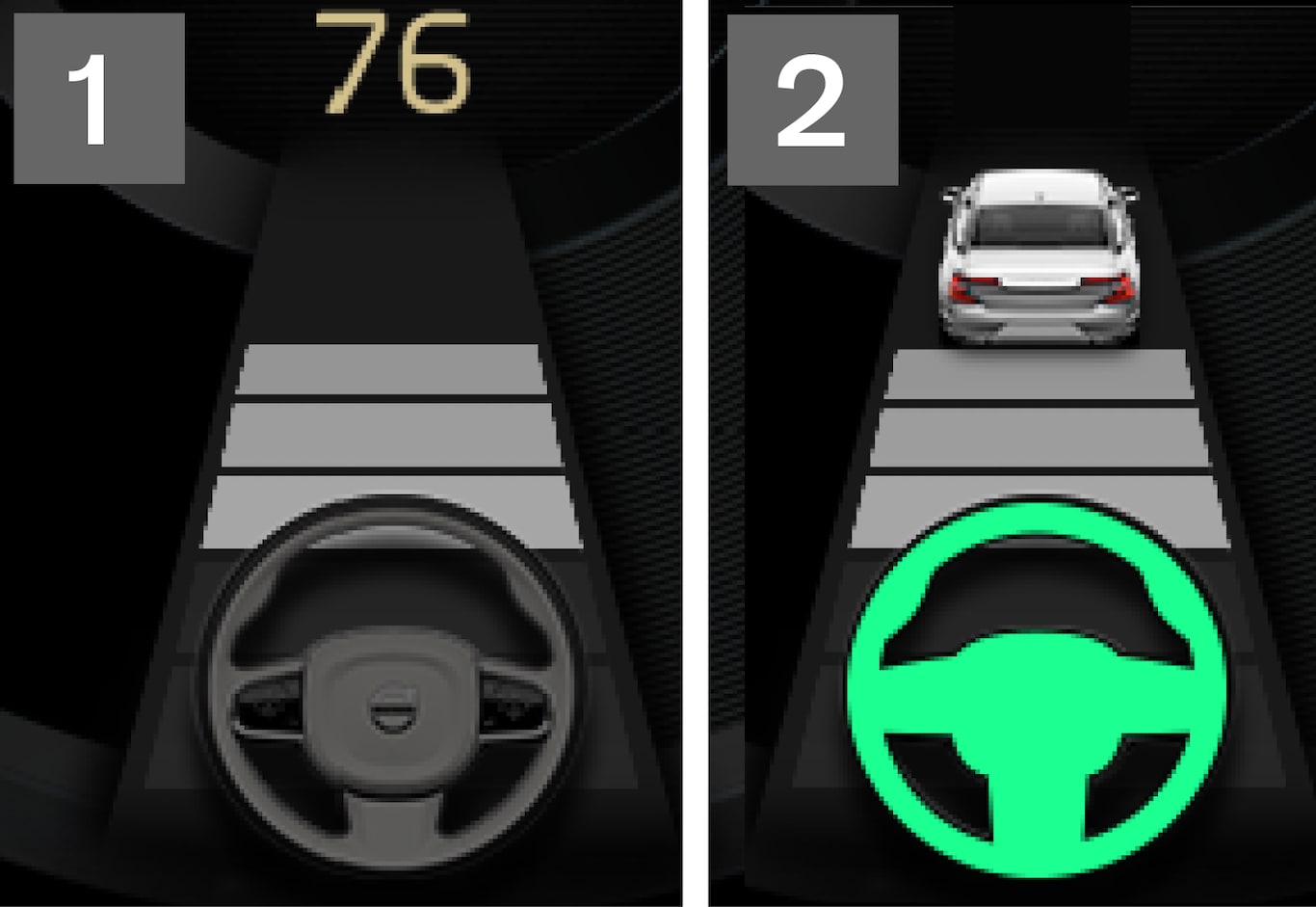Get to know Pilot Assist
The first few times you use Pilot Assist, it may be a good idea to drive in a calm traffic situation on a motorway. Pilot Assist is designed to work best on dry motorways with clear lane lines and a smooth flow of traffic.
Give yourself plenty of time to get to know the function. After a while, you will feel comfortable with how it works and learn the situations in which Pilot Assist can help you. It is important for you always to pay attention to your driving and keep your hands on the steering wheel. You are always ultimately responsible for driving in a safe manner, even when using Pilot Assist.
Round bends and when the road splits
Pilot Assist interacts with you, the driver. You should therefore always be prepared to increase your own steering input, particularly in curves. Do not wait for the car to provide steering assistance. Perform the necessary steering manoeuvres.
If you are approaching an exit or a road junction, drive towards the lane you want to aim for – this tells Pilot Assist where you are going.
Pilot Assist attempts to keep your car in the middle of the lane
When Pilot Assist helps to steer, it attempts to place your car halfway between the visible road lines. For a smoother drive, it is a good idea to allow the car to find a good position. You can always adjust the position yourself by increasing your steering input. It is important for you to make sure your car is positioned safely in the lane.
If you think Pilot Assist is positioning the car in a way that is not suitable to the traffic situation, or the way you want to drive the car, you can simply switch off Pilot Assist or switch to adaptive cruise control1 via the steering wheel buttons. You can switch from active Pilot Assist to active adaptive cruise control by pressing the left arrow button on the steering wheel. If you want to reactivate Pilot Assist, press the right arrow button on the steering wheel.
How do I know when Pilot Assist is providing steering assistance?
When the steering wheel symbol in the driver's display is green, Pilot Assist is helping you to steer. If the steering wheel symbol is grey, no steering assistance is provided. You can clearly feel from the steering wheel when Pilot Assist is helping to steer. You can always steer the car yourself in a manner that differs from what Pilot Assist suggests. When you do so, you will feel slight resistance in the steering wheel as long as Pilot Assist is active.

 When the steering wheel symbol in the driver's display is green, Pilot Assist is helping you to steer.
When the steering wheel symbol in the driver's display is green, Pilot Assist is helping you to steer.Steering assistance can toggle between off and on at any time
It is important to be aware that steering assistance may toggle between off and on at any time, without prior warning. This may be because the road lines are not clear enough for the system to see them, for example.
Focus on your driving and keep your hands on the wheel
It is also important for you always to carry on being active and alert when driving as Pilot Assist is unable to read all situations and the function may toggle between off and on without prior warning. If the system discovers that you are not keeping your hands on the steering wheel, a warning will sound and a text message will be shown on the driver display. Pilot Assist will be switched off if you fail to comply with the request.
Conditions for Pilot Assist
The following are required to allow Pilot Assist to help you drive the car and contribute with steering assistance:
- Pilot Assist must be enabled using the steering wheel button.
- The driver must be wearing the seatbelt and the driver's door must be closed.
- The lane's edge markings must be clear and must be detected by the car. If the car cannot detect the road lines then the steering assistance may disappear/return without warning.
- The speed must not exceed 140 km/h (87 mph).
- The driver must keep his/her hands on the steering wheel.
Warning
Warning
- The function is supplementary driver support intended to facilitate driving and make it safer – it cannot handle all situations in all traffic, weather and road conditions.
- The driver is advised to read all sections in the Owner's Manual that relate to this function to learn about factors such as its limitations and what the driver should be aware of before using the system.
- Driver support functions are not a substitute for the driver's attention and judgement. The driver is always responsible for ensuring the car is driven in a safe manner, at the appropriate speed, with an appropriate distance to other vehicles, and in accordance with current traffic rules and regulations.